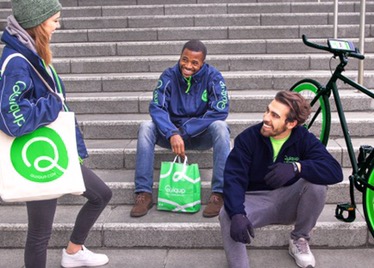Online restaurant platform hungryhouse.co.uk is now working with an on-demand logistics start-up, Quiqup, to help its partner take-out restaurants meet increased demand for drivers at peak times.
The partnership gives hungryhouse restaurants on-demand access to Quiqup’s fleet of bicycles, scooters and cars, its underlying technology and customer support services, making it easy for these restaurants to match the pace and efficiency of larger competitors without any upfront investment in delivery equipment or staffing.
Quiqup’s technology has been integrated into the tablet-based transmission device provided by hungryhouse, so restaurants can now request a driver at the touch of a button.
For restaurants that don’t have their own delivery fleet, they can now use Quiqup for all of their orders, taking that barrier away from getting on the platform.
The partnership has already been soft-launched in central London, with hungryhouse and Quiqup planning on expanding the coverage area in the coming months.
According to Quiqup CEO, Bassel El Koussa, on-demand logistics is a flexible service that can work for any industry. “Whether they sell takeaway food, groceries or clothes, our partners are able to tap into our infrastructure quickly and easily by integrating our technology into their existing systems,” he said.
“This gives hungryhouse restaurants the ability to offer the kind of fast, reliable and cost-effective delivery services that customers increasingly expect, without any of the pain of running their own delivery operations.”
The London-based start-up first launched in September 2014, and has since worked with business as diverse as independent retailers to major brands. It also works directly with consumers, from picking up dry cleaning to groceries.
For hungryhouse CEO, Alice Mrongovius, working with on-demand logistics is ideal for restaurants that need to stay agile and responsive to demand. “This partnership with Quiqup gives the restaurants on our platform complete flexibility when it comes to how they deliver takeaway to their customers. Many restaurants already have their own drivers, but others will now be able to use Quiqup to manage all of their deliveries, or alternatively call on them to assist during peak times of the day,” she said. “This makes managing the logistics of takeaway far easier for all our partner restaurants, and allows owners to focus less on delivery and more on cooking the tasty food that they are known for.”
With Uber and Amazon honing in on the food delivery sector, start-ups that serve the smaller high-street restaurants and canteens may need to up the ante. Meeting customer demand at the same, if not better, speed and quality of service may be their best bet.






